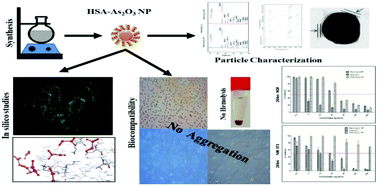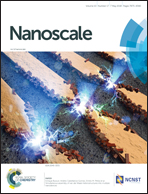Investigation of HSA as a biocompatible coating material for arsenic trioxide nanoparticles†
Abstract
The anticancer properties of arsenic trioxide (As2O3) are accompanied by highly cytotoxic effects on normal cells. This necessitates developing modalities towards the targeted delivery of As2O3. Albumins, on account of their large structure and presence of several interacting groups, are ideal for encapsulating or carrying various drugs. In the present study, human serum albumin (HSA) was chosen as a coating agent to increase the biocompatibility of As2O3. An in situ chemical precipitation method was adopted for the synthesis of HSA-coated As2O3 nanoparticles (HSA-As2O3NPs) that were further characterized by Fourier-transform infrared spectroscopy (FT-IR), X-ray diffraction (XRD), ultraviolet–visible (UV-vis) spectroscopy, inductively coupled plasma atomic emission spectrometry (ICP-AES), zeta potential and transmission electron microscopy (TEM). HSA-As2O3NPs were assessed for their biocompatibility using mouse fibroblast cells (NIH-3T3) and human dermal fibroblast (HDF) cells by a time- and dose-dependent cytocompatibility MTT assay. The safety of the HSA-As2O3 nanoparticles was assessed using haemolysis and blood cell aggregation studies. Molecular simulation studies provided evidence of interaction between HSA and As2O3. Herein, we report the development of a protein-based delivery system for As2O3 with improved biocompatibility.



 Please wait while we load your content...
Please wait while we load your content...